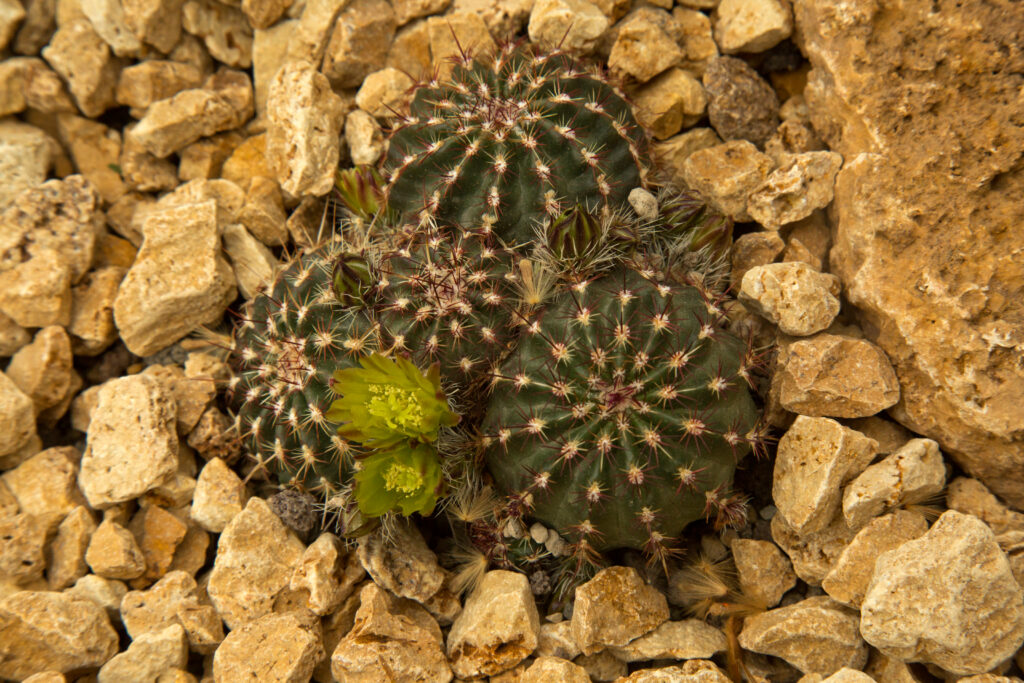Cacti are fascinating succulents recognized for their unique forms, colors, and capacity to withstand extreme conditions. These intriguing succulents have evolved to survive in some of the harshest environments on earth.
South Dakota has beautiful river valleys, rolling hills, and mountains. Some of the more rugged landscapes are home to various cactus species. Each one has unique qualities that help it survive and flourish. In this article, we’ll examine three different cactus species found in South Dakota. We’ll also learn about their distinguishing traits so you can recognize these unusual plants and enjoy their beauty.
How to Identify Cacti
Cacti are unique plants in various sizes, forms, colors, and heights. Cacti come in countless varieties, but the common ones distinguish themselves by their size and shape, flowers, stems and spines, and leaves.
- Size and shape: Some cacti remain small even when fully grown, while others are massive. Some species also go through a change of form during maturity.
- Flowers: Certain species could have two-toned, vivid, or pale blossoms. You can learn much about the species by watching how the flowers develop.
- Stems and spines: Cacti branches can be smooth or ribbed, with only areoles or spines. The spines can be thin or thick, scarce or dense, depending on the succulent morphology.
- Leaves: The vast majority of cacti lack any leaves. Most leaves can be where there is new growth beginning.
You can reduce your search and identify your species by learning about the types of cacti while keeping these specifications in mind. In addition, knowing what kind of cactus you have can help you choose the ideal environment and habitat for your succulent.
Prickly Pears to Ball Cacti: Exploring the Cacti Diversity in South Dakota
South Dakota’s severe weather and desolate terrain make it a challenging location for the growth of most plant species. Nonetheless, the brittle prickly pear cactus, the nylon hedgehog cactus, and the pincushion cactus are three of the most resilient species that have adapted to flourish in this environment.
1. Brittle Prickly Pear Cactus (Opuntia fragilis)
The height of a brittle prickly pear cactus ranges from 2-5 inches on average. It has rounded, thick pads that grow on top of each other, which causes the succulent to stoop down toward the ground. This plant typically consists of two to six nopales, usually 2 inches long and one inch wide.
A typical colony of brittle prickly pears will produce one to two blossoms on each plant, and the width of each yellow flower will measure two inches after it has fully blossomed. Brittle prickly pear cacti can grow in the spaces between rocks, such as on the stony cliffs that line the James River in South Dakota.

Brittle prickly pear cacti (pictured) will produce beautiful yellow flowers in the summer.
©Saeedatun/Shutterstock.com
2. Nylon Hedgehog Cactus (Echinocereus viridiflorus)
This type of cactus has a small, round stem that can be anywhere from 1 to more than 11 inches tall. It can also be 3.5 inches wide. In addition, this species usually has no branches, but sometimes it can form short groups of several limbs. The central part of the succulent is bumpy, and it has many areoles with spines on them. The spines can be red, white, yellow, purple, or even a mix of colors, with darker tips.
The flower is 1 inch long, and its tepals can be green, yellow, or red, with dark crimson spots in the center. You can find nylon hedgehog cacti in South Dakota, where the land is rough and rocky.

The nylon hedgehog cactus (pictured) can develop groups of stumpy limbs.
©Podolnaya Elena/Shutterstock.com
3. Pincushion Cactus (Escobaria vivipara)
The pincushion cactus is a succulent with small, round stems covered with grooved bumps with 11 to 55 spines per areole and spines on its limbs. The spines in the middle of the main stem are straight and spread out like spokes, but the spines on the edges are either close together or far apart. In addition, the flowers can be up to 2.5 inches long.
This cactus species stands out in its genus because it can grow 29 inches tall and form colonies with more than 200 stems. On the rocky slopes of South Dakota, you can find pincushion cacti.

The pincushion cactus (pictured) has beautiful, delicate, pink, star-shaped flowers on its spiny limbs.
©Dominic Gentilcore PhD/Shutterstock.com
Final Thoughts
Cacti are intriguing plants that have developed to endure in some of the harshest settings on earth. The brittle prickly pear, nylon hedgehog, and pincushion cacti are just a few of the cacti species found in South Dakota. Each has unique characteristics that enable it to survive in this harsh environment.
We can appreciate the variety and beauty of these strange plants by learning how to recognize cacti based on their size and form, stems and spines, leaves, and blooms. So enjoy learning more about South Dakota’s diverse cacti, whether you’re a fan of succulents or naturally interested.
The photo featured at the top of this post is © Saeedatun/Shutterstock.com
FAQs (Frequently Asked Questions)
What kind of cactus grow in South Dakota?
The most common cacti found in South Dakota are the prickly pear species, such as the brittle cactus.
Is there cacti in the Badlands?
Yes, some species of cacti can grow in the Badlands. For instance, the Mesa Verde cactus can be found growing on rocky slopes.
Is the South Dakota Badlands a desert?
Did you know that South Dakota is home to cacti? Let’s explore the 3 common cacti you may discover in the Mount Rushmore State.
Thank you for reading! Have some feedback for us? Contact the AZ Animals editorial team.






